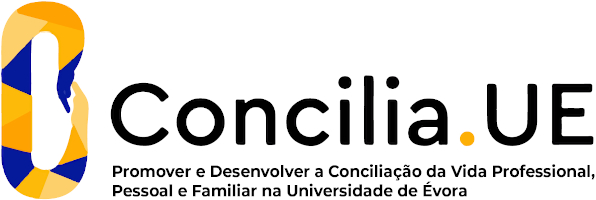2024
Therapeutic Relaxation
Name: Therapeutic Relaxation
Code: DES12080M
3 ECTS
Duration: 15 weeks/78 hours
Scientific Area:
Human Kinetics
Teaching languages: Portuguese
Languages of tutoring support: Portuguese, English, Spanish
Regime de Frequência: Presencial
Presentation
Therapeutic relaxation is one of the main tools for clinical intervention. This CU focuses on the fundamentals of relaxation, applied to mental health and chronic pain.
Sustainable Development Goals
Learning Goals
Knowledge:
- The historical and epistemological aspects of therapeutic relaxation (TR);
- Clinical populations in mental health and chronic pain (the body experience in clinical populations);
- The particularities of TR in mental health and chronic pain contexts;
- The techniques of therapeutic action in TR;
- The technical and methodological aspects of different relaxation methods (e.g., Dynamic R. of Dupont, Active R. of Boski, Active R. of Martenot);
- Research studies on TR;
- The design of TR programs;
Skills:
- Appropriateness of techniques of therapeutic action to the patient;
- Prescription and implementation of TR programs in mental health and chronic pain contexts;
- Self-awareness of own availability and body response in the therapeutic relationship;
- Establishment and maintenance of a therapeutic relationship;
- Design of research studies in TR.
- The historical and epistemological aspects of therapeutic relaxation (TR);
- Clinical populations in mental health and chronic pain (the body experience in clinical populations);
- The particularities of TR in mental health and chronic pain contexts;
- The techniques of therapeutic action in TR;
- The technical and methodological aspects of different relaxation methods (e.g., Dynamic R. of Dupont, Active R. of Boski, Active R. of Martenot);
- Research studies on TR;
- The design of TR programs;
Skills:
- Appropriateness of techniques of therapeutic action to the patient;
- Prescription and implementation of TR programs in mental health and chronic pain contexts;
- Self-awareness of own availability and body response in the therapeutic relationship;
- Establishment and maintenance of a therapeutic relationship;
- Design of research studies in TR.
Contents
I. The historical and epistemological aspects of TR
a. The body experience in relaxation
II. Clinical populations in mental health and chronic pain settings
a. The. Psychopathology (Disorders: depressive, anxiety, obsessive-compulsive, somatic symptoms, bipolar, psychotic);
b. Pain: Definition, characterization, types, comorbidities, evaluation, dominant models
III. Particularities of TR in mental health and chronic pain settings
a. Methodological principles and objectives
b. Physiological, psychomotor and emotional aspects
c. Indications / contraindications
d. Therapeutic action techniques (profile of the therapist in the scope of the attitude, observation, interpretation and body response of the therapist and the patient, rhythms, touch, proximity, verbalization)
e. Relaxation methods (Dynamic R. of Dupont, Active R. of Boski, Active R of Martenot)
IV. Research of therapeutic relaxation
a. The multi-method approach
b. The design of RT programs
c. Research needs in RT
a. The body experience in relaxation
II. Clinical populations in mental health and chronic pain settings
a. The. Psychopathology (Disorders: depressive, anxiety, obsessive-compulsive, somatic symptoms, bipolar, psychotic);
b. Pain: Definition, characterization, types, comorbidities, evaluation, dominant models
III. Particularities of TR in mental health and chronic pain settings
a. Methodological principles and objectives
b. Physiological, psychomotor and emotional aspects
c. Indications / contraindications
d. Therapeutic action techniques (profile of the therapist in the scope of the attitude, observation, interpretation and body response of the therapist and the patient, rhythms, touch, proximity, verbalization)
e. Relaxation methods (Dynamic R. of Dupont, Active R. of Boski, Active R of Martenot)
IV. Research of therapeutic relaxation
a. The multi-method approach
b. The design of RT programs
c. Research needs in RT
Teaching Methods
Theoretical classes involve active methodologies including analysis/discussion of themes, brainstorming, role play, case studies and group work, using audiovisual media such as slides and videos.
Theoretical-practical classes include an experiential approach that allows students to experience the different techniques of therapeutic action in relaxation, reflecting on the relationships between body experience, contextual factors, emotion and personality. Theoretical-practical classes include group work methodologies and case studies.
Continuous assessment implies the presence of 75% of theoretical-practical hours, and students should:
- Develop a critical reflection on the sessions, emphasizing the analysis of body experiences and the adequacy of different approaches to the specificity of each pathology (individual);
- Perform a simulation of an intervention situation from a clinical vignette (group).
The final exam consists of a written exam.
Theoretical-practical classes include an experiential approach that allows students to experience the different techniques of therapeutic action in relaxation, reflecting on the relationships between body experience, contextual factors, emotion and personality. Theoretical-practical classes include group work methodologies and case studies.
Continuous assessment implies the presence of 75% of theoretical-practical hours, and students should:
- Develop a critical reflection on the sessions, emphasizing the analysis of body experiences and the adequacy of different approaches to the specificity of each pathology (individual);
- Perform a simulation of an intervention situation from a clinical vignette (group).
The final exam consists of a written exam.
Assessment
Theoretical classes involve active methodologies including analysis/discussion of themes, case studies and group work, using audiovisual media such as slides and videos.
Theoretical-practical classes enable the experience and practice of different relaxation techniques and methods and the reflexion about the relationship between between body experience, contextual factors, emotion and personality. Theoretical-practical classes involve role play, group work methodologies and case studies.
Continuous assessment implies the presence of 75% of theoretical-practical hours, and students should:
- Develop a critical reflection on the sessions (individual; counting 30% of final grade);
- Justify and perform a simulation of an intervention situation considering a clinical vignette (group, accounting for 70% of the final grade).
The final exam has a written (50%) and practical (50%) test.
Approval implies achieving a 10 (in 20) in each assessment element.
Theoretical-practical classes enable the experience and practice of different relaxation techniques and methods and the reflexion about the relationship between between body experience, contextual factors, emotion and personality. Theoretical-practical classes involve role play, group work methodologies and case studies.
Continuous assessment implies the presence of 75% of theoretical-practical hours, and students should:
- Develop a critical reflection on the sessions (individual; counting 30% of final grade);
- Justify and perform a simulation of an intervention situation considering a clinical vignette (group, accounting for 70% of the final grade).
The final exam has a written (50%) and practical (50%) test.
Approval implies achieving a 10 (in 20) in each assessment element.
Teaching Staff
- Ana Isabel Rodrigues Morais
- Guida Filipa Veiga Moutinho [responsible]





















